Homebrew v0.1
Many months ago I was cursed blessed with the gift of an entire homebrewing kit for making the world’s tastiest microorganism waste product, beer. Unfortunately, I lived in a tiny city apartment with no way to brew outside, and I decided that my flatmates would probably not appreciate the entire place smelling of yeast for a month. As a result, I kept the kit in the closet until, finally, I moved to a new place with a nice big brewing-friendly basement. And thus began my first biology experiment since 8th grade…
I purchased a kit of ingredients for Caribou Slobber from Norther Brewer, a hoppy brown ale which both sounded delicious and happened to be the recipe featured in my kit’s tutorial video. It came with a jug of liquid malt extract, a pound of dry malt, three kinds of hops, some extra grains, and, of course, yeast.
Unfortunately, I realized only months after receiving the kit that the yeast in it needed to be refrigerated immediately. Alas, four months later did not quite count as sufficiently immediate, as I discovered when I tried to activate the yeast and found them to be rather…tired.
I did, however, find a suitable replacement, the “1099 Whitbread Ale”. It proved to be much more vigorous:
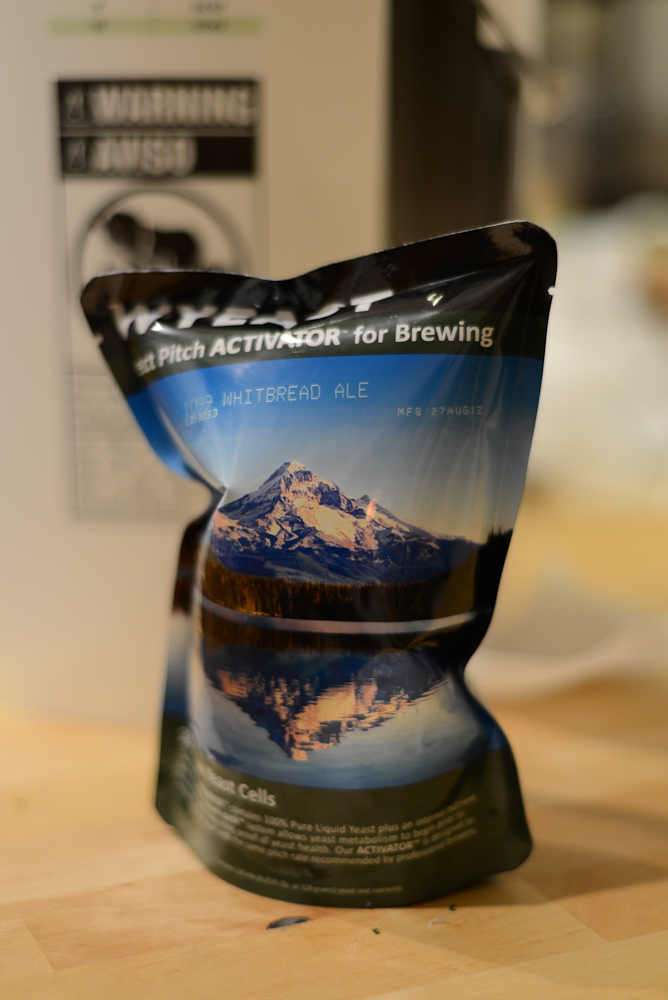 The yeast, about 28 hours after activation. The swelling is from CO2 produced by the yeast, which will later give the beer its bubbliness.
The yeast, about 28 hours after activation. The swelling is from CO2 produced by the yeast, which will later give the beer its bubbliness.
Brewing Day
On the big day, the first step was to fetch the water. I needed 2.5 gallons, but only had a 5 gallon pot with no other markings, so I improvised a depth gauge out of a wooden spoon.
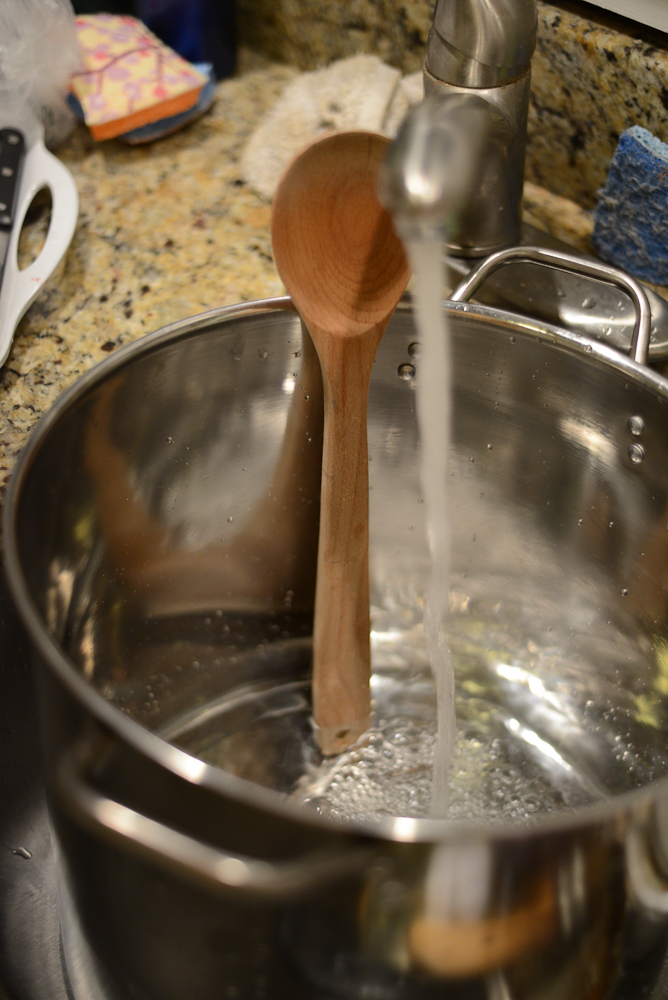
Next up was to steep the “specialty grains”. This consisted of a bag of various seeds, which had an interesting, earthy cereal smell. I stuck them in a mesh bag and soaked them in the water as I heated it on the stove.
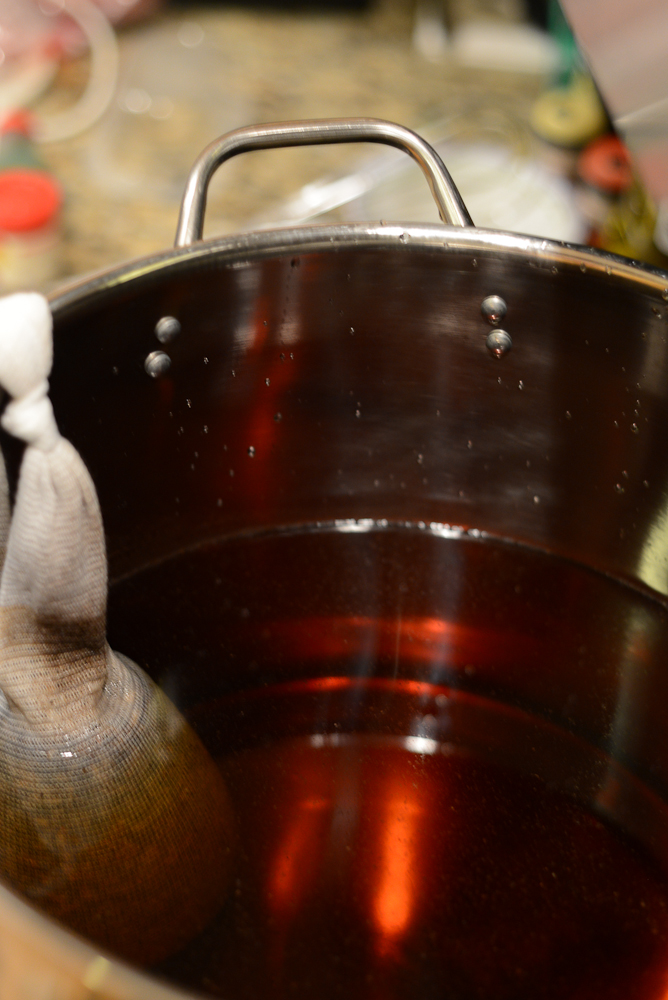
After the grains had been steeped and then removed, I brought the water to boil, then added the malt extract with the help of my friend Stephanie. The liquid extract is a dark brown color, like very dark maple syrup, and tastes like sweet soy sauce. It’s not half bad, actually. After adding the malt, the water (now wort) grew much darker:
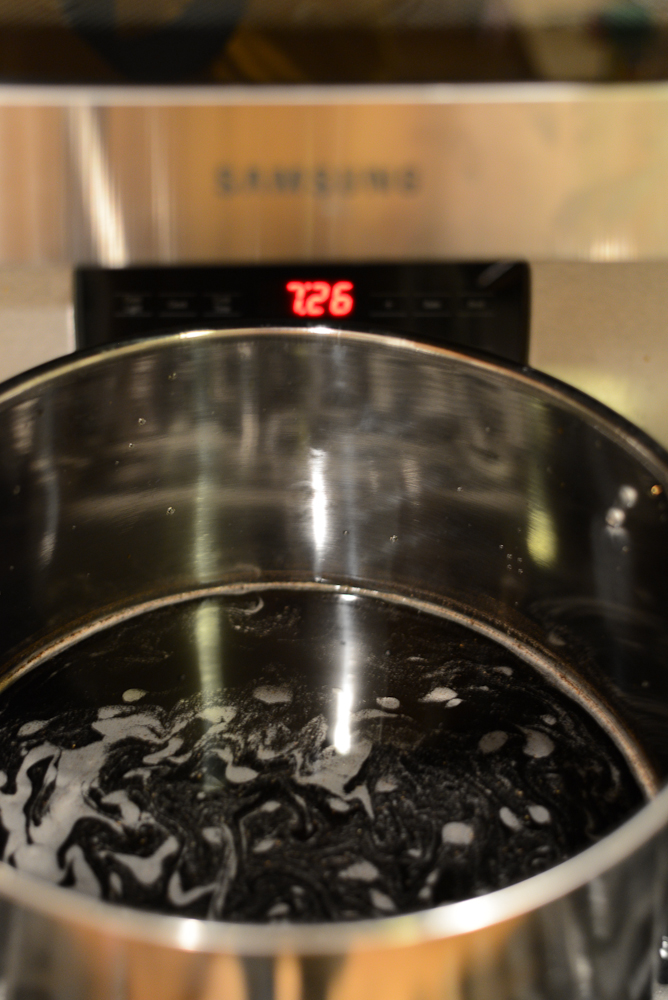
With the wort now full of sugar for the yeast’s later consumption, we kept heating and stirring it for an hour.
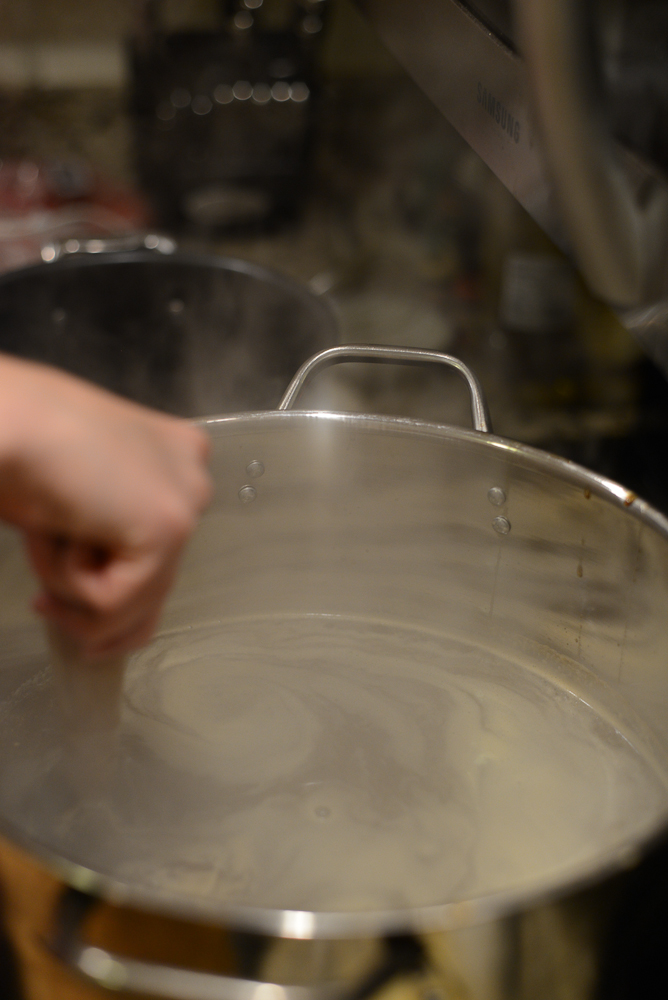
During the boiling process, we also added the hops from the Caribou Slobber recipe. These came as tiny green pellets, with a fantastic flowery smell. I must admit that they didn’t do much for the appearance of the wort, though:
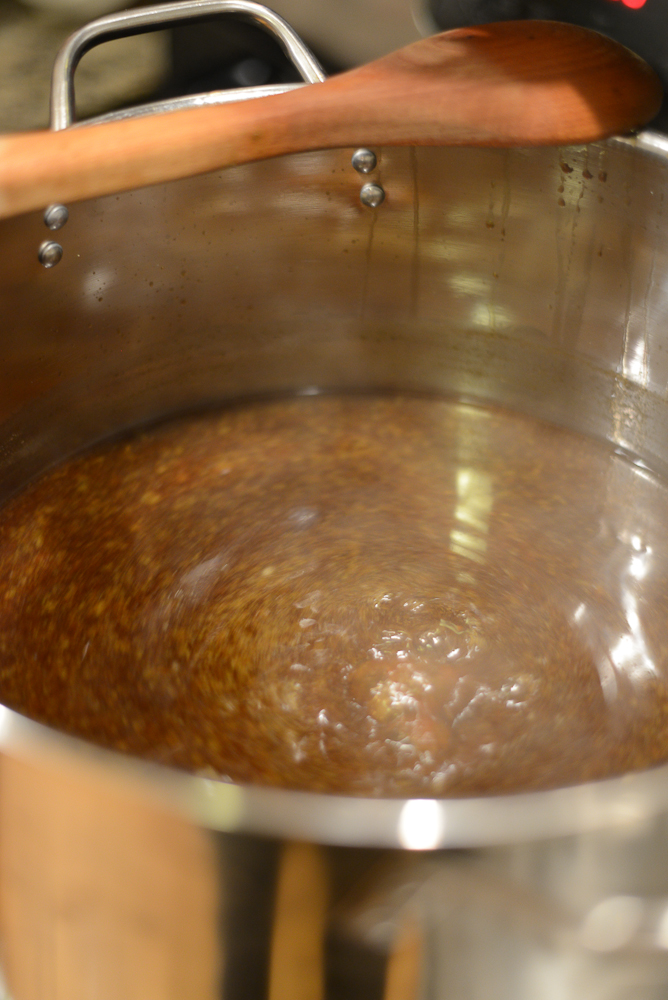
Finally, with the cooking of the wort finished, we only needed to cool down the liquid to room temperature.
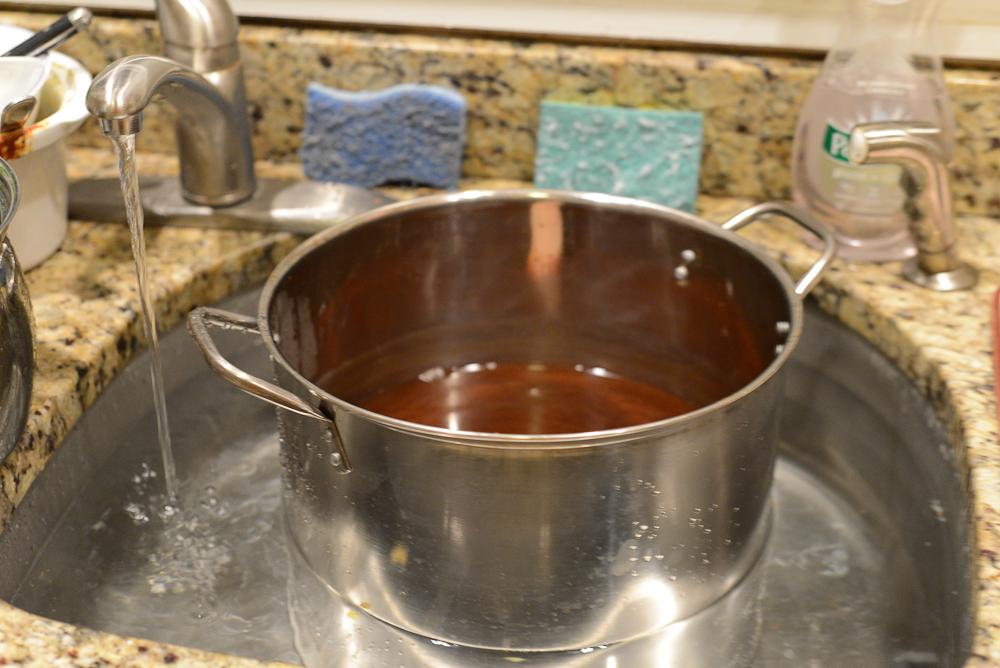
With the wort cooled, we added the yeast (all 100 billion of them), sealed up the fermentation bucket, and stuck it in the basement. It’ll be several weeks before the next step of bottling the beer, so until then I’ll just have to keep myself satisfied with the contents of my fridge.
Tasting the Process
For the sake of Science, we decided to take samples of the wort at various stages in order to observe the progression towards beer. From right to left, the three shots are, with my notes from tasting each:
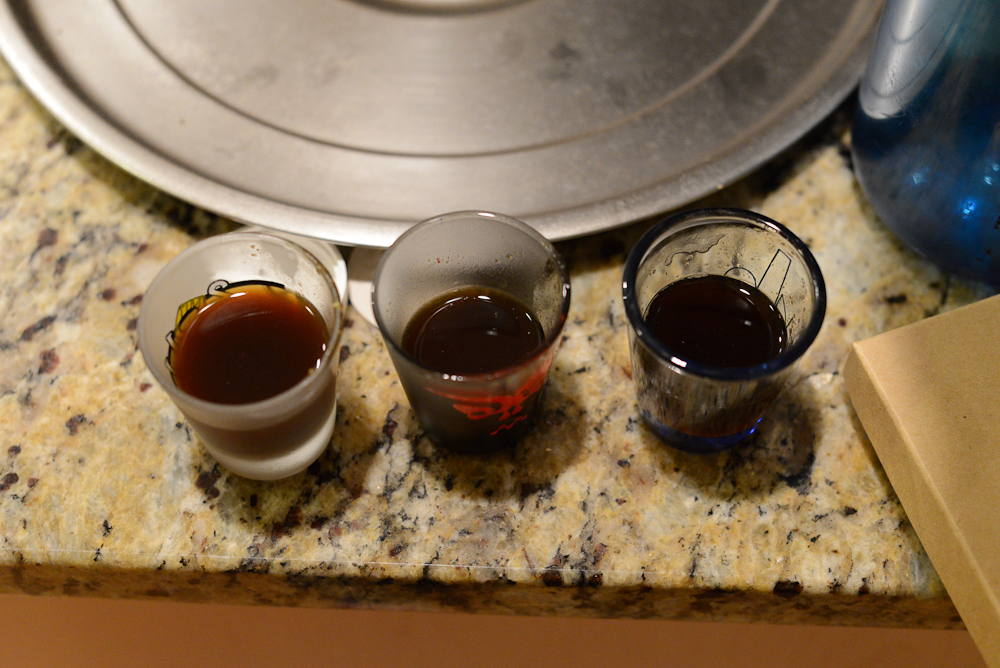
- Just after adding the malt extract, no hops: “delicious weird sickly-sweetness”.
- The wort, after 30 minutes of cooking and with 2/3 of the hops added: “sweet with slight hoppiness and bitter aftertaste”
- The wort, after the full hour of cooking and with all the hops present: “very hoppy, very bitter, kind of awful”
I suspect the yeast and the alcohol will help temper the awfulness of the hoppy wort.
To be continued, once the first fermentation is complete.
Robin Deits 05 October 2012